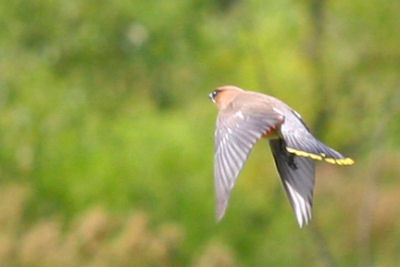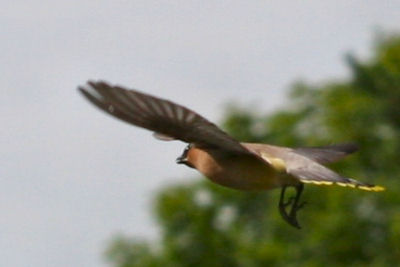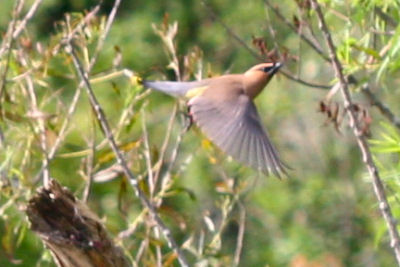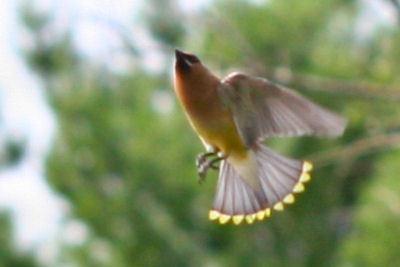Though Cedar Waxwings are known for their preference for eating fruit, they are actually also accomplished flycatchers. Daisy and I had the great pleasure of watching a flock of them showcasing their aerial abilities the other day at Five Rivers. Of course, I took a ton of pictures.
But as is often the case when photographing birds, especially birds in action, the forty shots I took translated to four that I am not embarrassed to share. Not that any of the four following photos are perfect or anything close, but once I saw the gorgeous birds dashing about, spreading their yellow-tipped tail (no orange ones today) for greater maneuverability, and being just plain gorgeous, I knew I had to blog about them. I’ll be going back to try for better, but in the meantime…




If you want to see these beautiful birds in your yard plant some berry-bearing bushes, or, better yet, plant a mulberry tree. Almost every time I’ve come across a mulberry tree with ripe berries it was crawling with waxwings. In fact, just up the trail from where I took these shots is a big old mulberry tree that earlier this year was probably providing these very same waxwings with an easier-to-catch meal.
And, just in case you are interested, Bohemian Waxwings, the Cedar Waxwings bigger and even brighter cousin, also fly-catch when berries are not available. Most people not living in the extreme north just don’t get to see them do it very often because Bohemian Waxwings are usually only around in the depths of winter when there are no flies to catch.
For more information on the world’s three waxwing species (the two mentioned and the Japanese Waxwing) check out Douglas Dunn’s Waxwings Are Wild page.













wonderful action shot of these waxwings! Normally I only am able to photograph them when they are sitting still!
Fantastic post! Waxwings are on my MUST see list. They look like paintings of birds, not real birds.
These are really good shots, Corey – they are such colorful birds. I’m glad you posted these pix. This is the first time I’ve ever seen photos of these birds in flight. It’s been quite a few years since I’ve seen these birds in the field. I’ll have to look for them again, most likely in one of our county parks. And I’ll be sure to look wherever I see mulberry trees.
Great pictures and post!-I was curious when I saw Waxwings hunting insects in a marsh near the ocean a few weeks ago.-I thought they were Eastern Kingbirds at first-very interesting to see them do this.
Thanks folks! May all of you have flocks of waxwings within feet of you to enjoy!